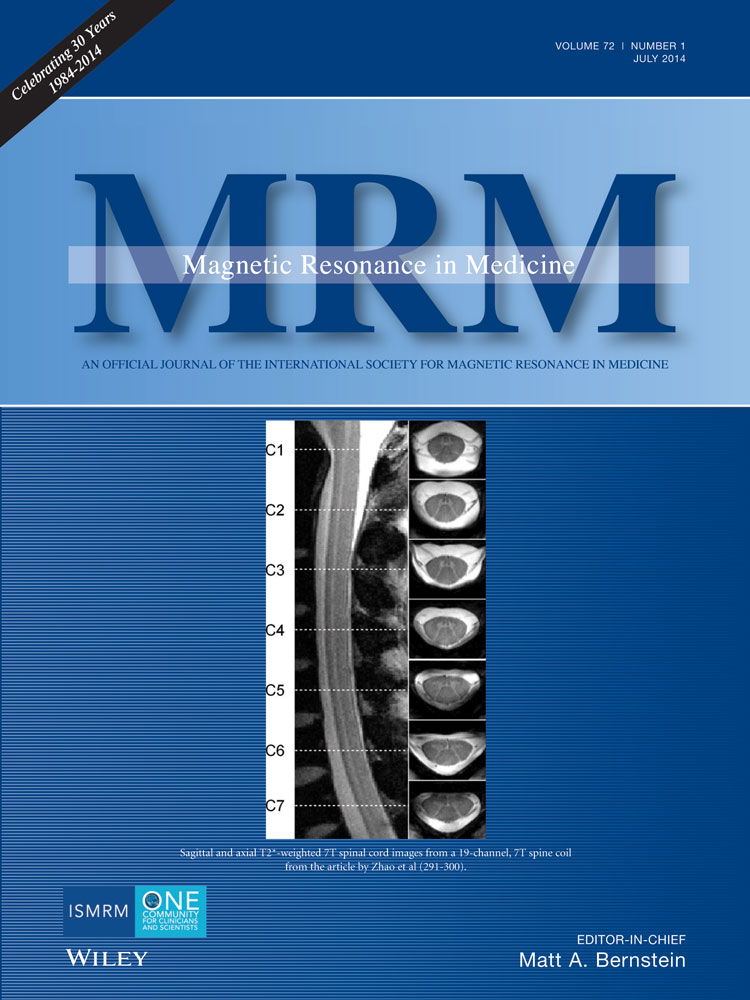Interslice leakage artifact reduction technique for simultaneous multislice acquisitions
Abstract
Purpose
Controlled aliasing techniques for simultaneously acquired echo-planar imaging slices have been shown to significantly increase the temporal efficiency for both diffusion-weighted imaging and functional magnetic resonance imaging studies. The “slice-GRAPPA” (SG) method has been widely used to reconstruct such data. We investigate robust optimization techniques for SG to ensure image reconstruction accuracy through a reduction of leakage artifacts.
Methods
Split SG is proposed as an alternative kernel optimization method. The performance of Split SG is compared to standard SG using data collected on a spherical phantom and in vivo on two subjects at 3 T. Slice-accelerated and nonaccelerated data were collected for a spin-echo diffusion-weighted acquisition. Signal leakage metrics and time-series SNR were used to quantify the performance of the kernel fitting approaches.
Results
The Split SG optimization strategy significantly reduces leakage artifacts for both phantom and in vivo acquisitions. In addition, a significant boost in time-series SNR for in vivo diffusion-weighted acquisitions with in-plane
 and slice
and slice
 accelerations was observed with the Split SG approach.
accelerations was observed with the Split SG approach.
Conclusion
By minimizing the influence of leakage artifacts during the training of SG kernels, we have significantly improved reconstruction accuracy. Our robust kernel fitting strategy should enable better reconstruction accuracy and higher slice-acceleration across many applications. Magn Reson Med 72:93–102, 2014. © 2013 Wiley Periodicals, Inc.




